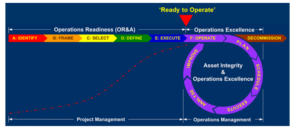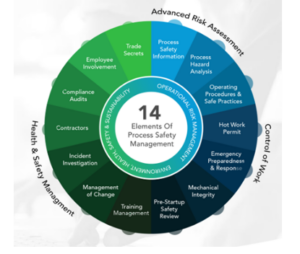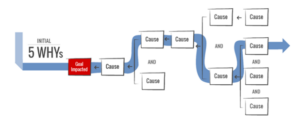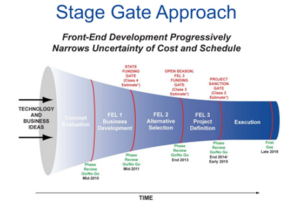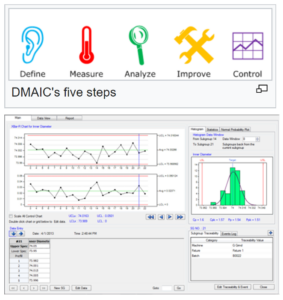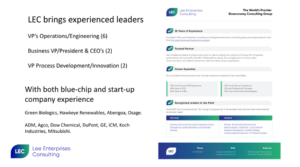What Can New Biobased Businesses do to Build & Operate Investments Successfully?
By Mike Sticklen LEC Partners
Winning Business Strategy, Robust Technology with Great Team
Currently, there are numerous new investments being made in bio-based industries including renewable hydrogen and renewable hydrogen derivatives, renewable diesel, new proteins, sustainable aviation fuel, bio-based plastics and chemicals and carbon capture, utilization, and storage. The recent inflation reduction act provides new incentives including production and investment tax credits and US government grants and loan guarantees while companies wanting to support their sustainability commitments are driving new investments in bio-based and low carbon intensity manufacturing plants.
Successful business ventures depend on having a winning business vision and strategy including robust technology and a great team to execute it. Many technologies are being adapted from other industries while some technologies are quite novel moving from bench-scale to pilot demonstration plants to commercial scale. Other process industries, including fossil fuels and petrochemicals, have gone through a similar development journey in the past. Applying this knowledge and experience together with innovative ideas from the bio-based technology pool of inventors can help increase the probability of the business venture being sustainable and profitable.
Your operations team alongside your R&D, product development/marketing and finance team is key to a successful business venture. In the early stages of a venture, the finance and R&D guys are focused on proving new technology and getting money to stay afloat. The operations team should engage early at the beginning of the demonstration and commercial plants’ front-end design.
Currently, there is a shortage of experienced process industry operations leaders with new technology experience. A seasoned operations leader with broad and deep capability typically has 20-30 years of experience. Teaming up with a seasoned leader with less experienced go-getters is a winning combination. The military has proven this with their senior sergeant and first lieutenant leadership model as a way to develop their future leaders. From 1990 to 2000 there was a dip in US agriculture and engineering graduates (see Fig.1) which led to a shortage of experienced operations leaders currently. Additionally, many experienced operations leaders are retiring. Some are returning to work as consultants, missing out on the fulfillment that comes from working with others. There is a perfect storm brewing with the need to build new energy and materials process plants with lower carbon intensity and sustainable products. Fig 2 illustrates the forecasted growth in biofuels and bioplastics. Consulting companies such as
LEC Partners
have a wealth of operations leadership talent available with both blue-chip and start-up company experience.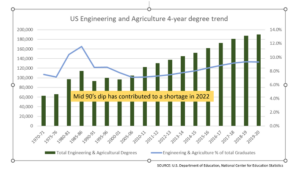

Owner’s Representatives are critical for a successful project.
A critical need during early-stage project development is the role of the Owners’ Representative. It is preferable that the Owners’ Reps. are staffed with operations leaders who will be expected to operate the newly constructed plant as plant managers or operations managers. That way they have “skin in the game” when making design decisions for safety, reliability, maintainability, operability, and quality. Owners’ Reps. should join the project team during front-end engineering design (FEED). Operational Readiness begins during FEED (see Fig. 3) Owners’ Reps. can be staffed with temporary consultant experts until the permanent Owners’ Rep. is filled with some overlap to build capability when necessary.
Figure 3. Operations Readiness begins in FEED
Sometimes, experienced Operations Leaders are required on short notice due to the inability to hire the right candidate or turnover. “Settling” for less than a perfect fit candidate is often a recipe for poor operations, especially in the beginning of a venture. The long-term culture is established by the first leaders, and the culture is difficult to change once embedded. Engaging an experienced Operations Leader early can help set up the new plant for long-term success either through mentoring the permanent leader or temporarily filling the leader role.
New technology bio-based operations can be prone to pitfalls.
We often find several common factors resulting in the poor serial number one commercial plant performance
- Poor quality basic design information coming into Front-End Engineering Design (FEED) including incomplete energy and material balances, particularly regarding recycle streams with low-level impurities and co-products. Biological reaction rates and an understanding of the impact of biological stressors from impurities can be missing. Mass and heat transfer parameters may not be understood resulting in equipment performance problems.
- The plant is not designed for reliability and has the lowest total long-term cost to operate (TCO) due to capital limitations and timeline pressure. Engineering and reliability design standards were not thought-out during FEED and the standards were left to the EPC contractor to select. This can result in higher operating and maintenance costs and the need for capital replacements too early in the plant’s life cycle. While the initial asset cost can be lower, the cost of operations, maintenance and equipment replacement can be much higher, with poor energy efficiency and asset utilization. (Fig. 4).
Figure 4. Total Cost to Operate (long-term)
- Commercial plant operating staff may not have had the opportunity to operate the pilot plant nor experience starting up and proving new technology. Staffing for success with potentially longer start-up periods is a critical success factor.
- Readiness-to-operate is incomplete including EH&S, PSM, operating procedures, training processes, quality assurance, reliability-centered maintenance & fast execution of small projects. New operating staff sometimes “don’t know what they don’t know”. EH&S incidents can result in loss of life or serious injury and business interruptions.
- Hiring practices are not well-established resulting in mismatches of values and capabilities. Due to cash flow constraints, operational hiring is often delayed until it is too close to start-up. Key leaders and some technical staff should come on board as early as FEED.
An experienced owner’s representative is able to identify and avoid these pitfalls early in the project process. They can help establish a culture that supports long-term business success.
Operations Best Practices can be applied early in the project life cycle to increase the probability of business operations success.
Early engagement of experienced owners’ representatives during FEED is a must. Leaving important design decisions that will impact operations to EPC contractors increases risk significantly. EPC contractor incentives are fundamentally different from owner incentives. Rapid engagements of an experienced operations coach will bring operational capabilities using a learn-teach-learn approach alongside permanent owner’s staff.
The following are some areas that have well-established and evolving operations best practices that can help reduce operational risk and increase the probability of a successful business venture.
a. Process Safety Management.
Personal and Process Safety are essential to prevent loss of life, serious injury and business interruption. Process Safety best practices have been well established in other process industries such as chemical and oil refining for many years. The commonly recognized fourteen(14) elements of a process safety culture are illustrated in Fig. 5. Each of the PSM elements requires in-depth knowledge of processes, and systems to implement them. Most important is establishing a safety culture from the beginning of a new operation. Process hazard analysis is required during FEED and all other elements are required to be in place prior to start-up for hazardous processes. Hazardous processes include materials that are flammable, combustible, or toxic.
Figure 5. Process Safety Elements
b. Reliability-Centered Operations.
Designing for reliability should take place during FEED and detailed engineering phases of the project. This includes designing for plant availability and plant maintainability. During the “readiness-to-operate” stages, establishing a culture of operator equipment ownership will result in reliable production and reliable product revenue while achieving benchmark operating and maintenance costs. Asset utilization is a huge driver of business profitability and customer satisfaction while improving safety and environmental performance. When failures do occur, utilizing processes such as the 5-why’s or cause-mapping (Fig. 6) for root-cause failure analysis can lead to long-term solutions and reliable production.
Figure 6. Root-Cause Failure Analysis
c. Project Management.
If you are already into FEED for your new project, you might already be familiar with the stage-gate approach to project development and execution (Fig. 7). It is all about managing risk versus investment spending. It is less costly to change a design on your computer vs. changing piping in the field. The Front-End Loading(FEL) phased approach is a best practice for large capital projects that has proven to be effective over hundreds of projects by bodies including Independent Project Analysts (IPA) and the Construction Industry Institute (CII). Good quality FEED has been proven to result in lower capital spending, better schedule performance and better long-term operating performance.
FEL-0 and FEL-1 are about ensuring the business opportunity is defined and well-understood. There is nothing worse than executing a project well for a “white-elephant” business proposition. It is a waste of capital and time. Once FEL-1 provides confidence that the business opportunity has acceptable risk, the engineering and technology experts can dive into full-blown FEED to get the project well-defined in terms of design scope, cost, and schedule. By the way, much of the emphasis is usually on capital cost and schedule. While important for short-term cash flow needs, long-term reliability and customer satisfaction are driven by designing for reliability and quality with robust technology selection during FEED. The latter factors will result in superior venture financial performance.
Figure 7. Project Stage Gate Approach
d. Quality Management & Continuous Improvement.
Designing and operating with the “voice of the customer” in focus is essential for long-term business success. For many bio-based fuels and chemicals, this usually means consistent purity in terms of by-products and additives. For bioplastics, it means consistent polymer properties such as melt flow, density, and physical properties. There are many best practices that help producers achieve quality and product performance customer requirements including the Six Sigma DMAIC Process (Fig. 8), advanced process control and predictive analytics. The latter can be applied to plant reliability, process yields and energy efficiency as well.
Figure 8. Six Sigma DMAIC process and Process Control
LEC has operations leaders (Fig. 9) with on-the-ground new technology commercialization experience at both blue-chip and start-up companies. Our experts are flexible regarding location, time commitment and right-sizing optimum solutions for your business. We can help instill a culture of operational discipline and help mentor and develop your permanent operations leaders through the application of the best practices described above.
Figure 9. Lee Enterprise Consulting Expertise
About the Author. Mike Sticklen has over 40 years of experience in biological and chemical process industries, renewables, and polymers. He has held a variety of leadership roles with Flint Hills Resources, Hawkeye Renewables, Dow Chemical, and DuPont during his career, and currently serves as a Project Director at LEC Partners
Have some questions?
Not sure where to start?
Let's start a conversation. We're here to help you navigate
the bioeconomy with confidence.
